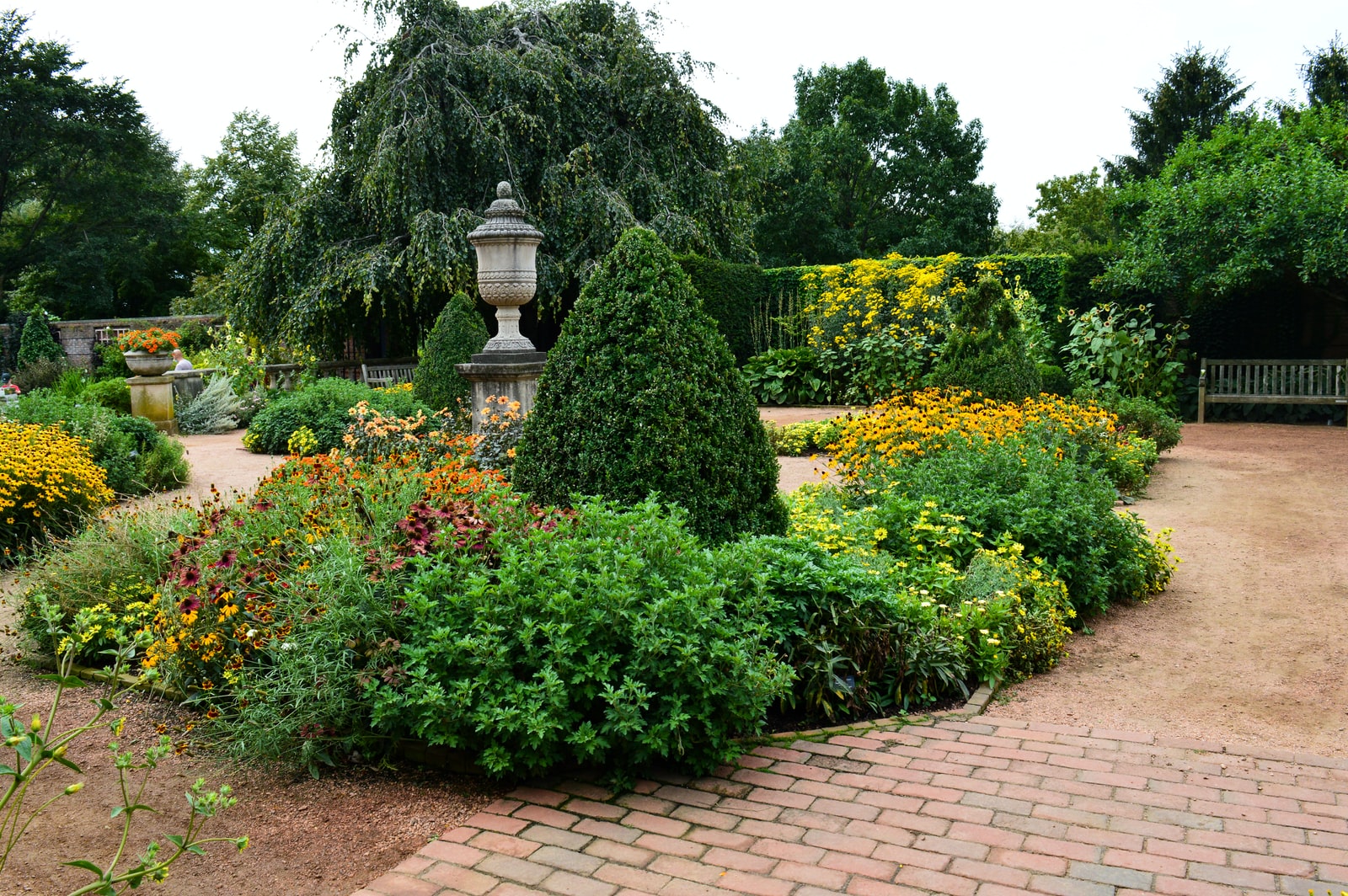Outdoor spaces connect people with nature, offer room to play, exercise, and spend time with friends and family.
They also play an important role in reducing air and water pollution and creating habitats for all kinds of wildlife – including pollinators. While traditional landscape practices focus on ornamental value, they can, when mismanaged, result in deleterious impacts on water quality and general environmental health. Sustainable landscaping, on the other hand, encourages self-sustaining mindful choices that minimize environmental impact and can translate to savings in time and money.
Regardless of your business type, if you own and maintain outdoor space you should evaluate your needs and make a plan! Are you a business that demands an expanse of lawn or would a pollinator garden be an option? Is flooding or erosion a concern? If parking is your predominant space, there’s a sustainable consideration there too – permeable pavers!
- Encourage planting native species and remove invasives. Native species are healthier for the landscape, require less maintenance (time and money), and create a home for insects and animals, as well as attract pollinators and birds. Avoid and remove invasive plants. Invasive plants can quickly steal growing space from native ones. And finally, remove plants in your landscape areas that require too much maintenance such as water, pesticide, or fertilizers. Replace them with hardier native varieties.
- Reduce your grass areas. Match your lawn to meet your business needs. Grass creates few environmental advantages while requiring time, money, energy and water to maintain.
- Install green infrastructure. From solar-powered lighting to rain garden and bioswale installations to permeable pavers, there are many ways for you to protect your property, increase aesthetics and contribute to the environmental health of the community via infrastructure. When it comes to fencing and decks, choose sustainably harvested materials.
- Conserve water. If you have irrigation, check the heads frequently for leaks and spout direction. Make sure that it is watering the desired area and not spraying the street or driveway. Consider installing a rain sensor that will shut off the irrigation when it rains. Try to manage water on site. Create rain gardens, reduce impervious surfaces, and select drought resistant plants that do not require a lot of water. Collect rainwater from roof runoff into a rain barrel for landscape watering.
- Consider your landscaping service. Do they use low or zero-emission landscaping equipment? Gas-powered lawn equipment, such as leaf blowers, lawn mowers, chain saws, and snow blowers, are a significant source of pollution – both air pollution and noise pollution. The health risks associated with gas-powered equipment, as well as the environmental pollution they produce and the destruction of habitats they cause, is serious. Read more [link to the Leaf Blowers section in Residential Yards.] about the harm gas-powered lawn equipment causes to the environment.
- Leave the grass clippings. Leave grass clippings on your lawn after mowing to allow them to decompose. It releases water and nutrients back into the soil requiring less watering and fertilizer. Bagging grass clippings is illegal in the state of Connecticut.
- Go chemical free. Reduce or avoid chemicals, including fertilizers, pesticides and herbicides. Lawn chemicals are linked to certain types of cancer, neurological diseases, and birth defects. They also release toxins into the environment, causing air and water quality to decline, as well as seep into lakes and streams, killing insects and fish and causing disruptions to the food chain. If you only made one greener change in your business, this one would have far-reaching impacts.
